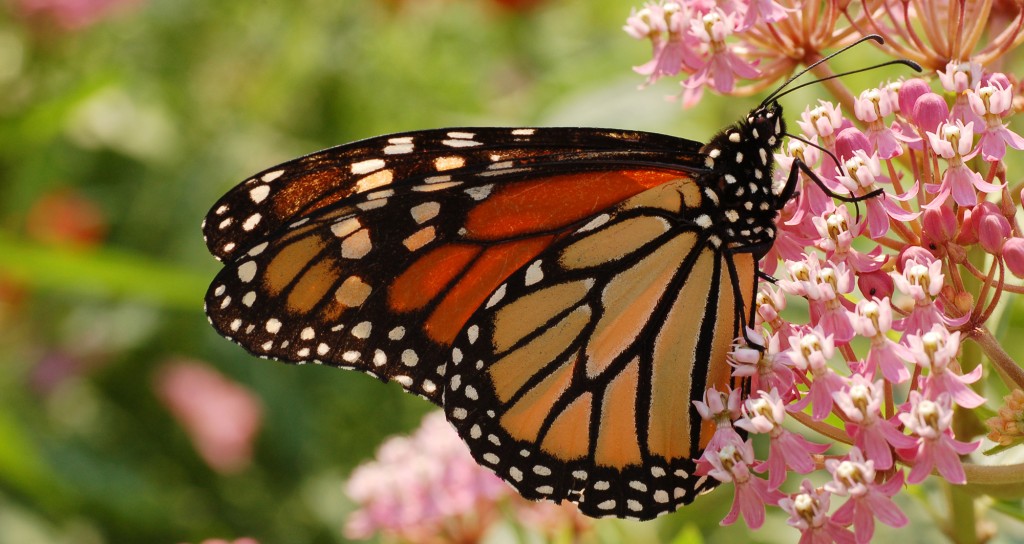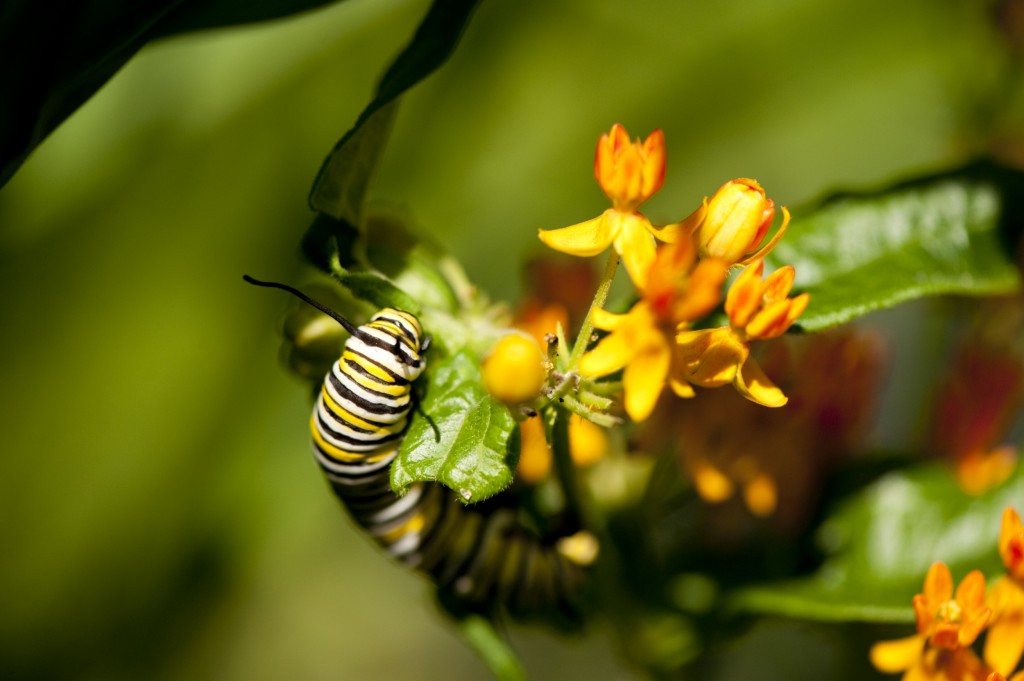Of Monarchs and Milkweed
Posted in Around the Garden, What's Beautiful Now, Wildlife on July 8 2013, by Joyce Newman
Joyce H. Newman holds a Certificate in Horticulture from The New York Botanical Garden and has been a Tour Guide for over seven years. She is the former editor of Consumer Reports GreenerChoices.org.

Monarch butterflies are among the most popular and prominent insects in the Native Plant Garden, easy to spot with their dramatically dark orange and black patterned wings. One reason for their high visibility and large numbers is actually their relationship with the tall milkweed plants, which are flowering now in the dry meadow. Without the milkweeds, we wouldn’t have the monarchs.
In fact, monarchs (Danaus plexippus) depend on milkweed throughout their entire life cycle—when they lay eggs and when their larvae, in caterpillar form, feed exclusively on milkweed.
Many different species of native milkweed provide nourishment for monarchs, including swamp milkweed, green, purple, redwing, whorled, and horney spider varieties. The dry meadow contains a total of more than 500 milkweed plants. Of these, by far the most numerous are the butterfly milkweed (Asclepias tuberosa).
According to Dr. Robert Naczi, Curator of North American Botany at NYBG, milkweed sap is actually poisonous. He explains: “The monarch takes advantage, in a way, of this poison because it can use the poison to repel its enemies. The larvae that feed upon milkweeds ingest the poisons and sequester them within certain parts of their body. Once a predator takes a taste of a monarch butterfly larvae, it will very quickly spit it out because of the poisons, which are quite distasteful. The same is true for the adult monarchs, which are very poisonous.”

So while the bright, bold wings of the monarch are very attractive to humans, to a blackbird or other predator they’re a warning sign: “Don’t eat me!”
If you see a monarch laying eggs on the milkweed plants, the offspring will eventually be flying south in the fall—about 3,000 miles by some estimates—first to the Gulf Coast, then on to Mexico, and further south to the mountain forests of Central Mexico where they winter. But because these forests have been reduced by climate change, logging, and other activities, monarchs are losing their winter habitat. This means that it is crucial to help those that do survive over the winter by providing more milkweed food and habitat up north so they can reproduce up north in the summer. Instead of cutting down milkweeds and removing them from roadsides and fields, we should be planting more of them.
The variety of milkweeds in the Native Plant Garden can provide a continuous bloom from June through September, so the population of monarchs should grow and prosper as well. Native garden expert Dr. Douglas Tallamy advises: “The more we can build monarch populations while they are in North America, the more likely the species will survive large losses during the winter months in Mexico.”
For more information on what you can do to foster the relationship between monarchs and milkweed, click here.

